The Legend of the Sphinx
Reading Time: 9 min
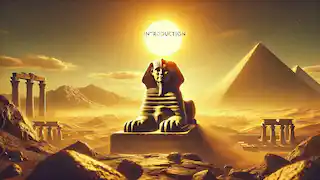
About Story: The Legend of the Sphinx is a Legend from egypt set in the Ancient. This Dramatic tale explores themes of Wisdom and is suitable for All Ages. It offers Cultural insights. A tale of fate, riddles, and the eternal mysteries of two ancient worlds.
In a time before recorded history, when the gods of Olympus and the deities of Egypt still roamed the earth, there existed a creature whose power and mystery captivated the minds of both Greeks and Egyptians. This creature was the Sphinx, a being both feared and revered, whose origins were shrouded in myth and whose presence marked the intersection of two of the greatest civilizations known to mankind.
In Greece, the story of the Sphinx is deeply tied to the city of Thebes, a grand metropolis that thrived under the protection of its walls and the wisdom of its rulers. The city was renowned for its scholars, its architecture, and its strategic importance. But as with all cities, it was not immune to the whims of the gods, who could just as easily bless as they could curse.
The King of Thebes, Laius, had been warned of a prophecy that would bring ruin to his household. The oracle at Delphi had foretold that his own son would be the cause of his downfall, a dire prediction that haunted Laius from the moment his son Oedipus was born. Fearing the prophecy, Laius ordered that the infant be taken to a remote mountain and left to die. The baby’s ankles were pierced, and he was left exposed to the elements, a sacrifice to fate.
However, fate had other plans. A shepherd, passing through the mountains, discovered the child and, moved by pity, took him in. He raised the boy as his own, naming him Oedipus, which means “swollen foot,” a reference to the wounds inflicted upon him as a baby. Oedipus grew up in the city of Corinth, unaware of his royal lineage or the dark prophecy that shadowed his life.
Years passed, and Oedipus became a strong and intelligent young man. One day, while seeking to learn more about his origins, he visited the oracle at Delphi. There, he was told of a terrible prophecy: he would one day kill his father and marry his mother. Horrified, Oedipus vowed never to return to Corinth, believing that the people who raised him were his real parents. In an attempt to avoid his fate, he left the city and began wandering across Greece.
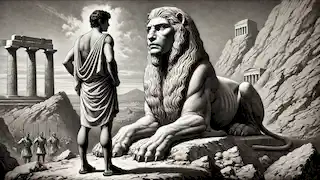
Meanwhile, in Thebes, the gods had sent a terrible curse upon the city. A creature, half-lion and half-human, had appeared on the road leading into Thebes. This creature, known as the Sphinx, perched on a high rock, blocking the path of travelers. The Sphinx was no ordinary monster—it possessed the wisdom of the gods and would pose a riddle to all who sought to pass. Those who failed to answer correctly were swiftly devoured.
The Sphinx's riddle was deceptively simple, yet impossibly complex: “What walks on four legs in the morning, two legs at noon, and three legs in the evening?”
The people of Thebes were terrified. Brave men and women attempted to answer the riddle, but none succeeded, and the bones of the dead began to pile up at the base of the Sphinx’s perch. Trade routes were cut off, famine began to take hold, and the people grew desperate. The curse of the Sphinx seemed unbreakable, and Thebes was on the verge of collapse.
It was during this time that Oedipus, in his wandering, approached Thebes. As he neared the city, he heard tales of the Sphinx and the devastation it had caused. Determined to help, Oedipus decided to confront the creature. He climbed the rocky path to where the Sphinx sat, its massive lion’s body coiled, ready to strike. Its human face smiled cruelly as it posed its riddle once more.
Oedipus listened carefully to the riddle, and after a moment of thought, he responded confidently, “Man. In the morning of his life, as an infant, he crawls on four legs. At noon, in adulthood, he walks on two legs. In the evening of his life, as an old man, he uses a cane and walks on three legs.”
The Sphinx’s smile vanished, replaced by a look of shock and disbelief. Oedipus had answered the riddle correctly, something no one else had been able to do. Bound by the laws of the gods, the Sphinx had no choice but to destroy itself. It leaped from the rock and dashed itself against the jagged stones below, shattering into dust and bone. The curse on Thebes was lifted, and the city was saved.
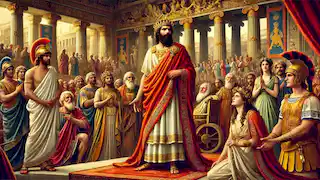
The people of Thebes welcomed Oedipus as a hero, and in their gratitude, they made him their king. He married the queen, Jocasta, and for a time, Thebes flourished under his rule. But the prophecy that had haunted Oedipus from birth had not been forgotten. The oracle’s words came to pass, and Oedipus unwittingly fulfilled his tragic fate by killing his father and marrying his mother. When the truth was finally revealed, Oedipus was driven mad with guilt and shame, and his story became one of the greatest tragedies in Greek mythology.
However, the story of the Sphinx did not end with Oedipus. Its legend spread beyond Greece, crossing the Mediterranean Sea to Egypt, where it took on a new form and meaning.
In Egypt, the Sphinx became a symbol of royal power and divine protection. Unlike the Greek Sphinx, which was often seen as a malevolent creature, the Egyptian Sphinx was viewed as a guardian of sacred spaces. Pharaohs ordered statues of the Sphinx to be built in their likeness, with the most famous being the Great Sphinx of Giza. This immense statue, carved from a single piece of limestone, stands as a testament to the power and wisdom of the pharaohs. The Great Sphinx guards the pyramids, its gaze eternally fixed on the rising sun, symbolizing the connection between the pharaohs and the gods.
The Egyptian Sphinx was often associated with the sun god Ra, who was believed to protect the land from chaos and evil. Some also linked the Sphinx to Horus, the falcon-headed god of kingship and the sky. In this context, the Sphinx represented the divine power of the pharaohs, who were seen as the earthly representatives of the gods.
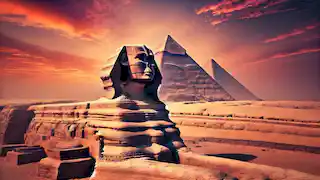
The legend of the Sphinx continued to evolve over time. While the Greeks saw the Sphinx as a creature of riddles and destruction, the Egyptians saw it as a symbol of protection and stability. Yet despite these differences, the Sphinx remained a creature of mystery, its true origins and purpose lost to the sands of time.
Many scholars and adventurers sought to uncover the secrets of the Sphinx, believing that it held the key to understanding the mysteries of the ancient world. Some speculated that the Sphinx was a remnant of a forgotten civilization, older than both Greece and Egypt, a relic of a time when gods and mortals lived together in harmony. Others believed that the Sphinx’s riddles were not just tests of human intelligence but clues to unlocking the secrets of the universe.
Over the centuries, the legend of the Sphinx inspired countless works of art, literature, and philosophy. In Greece, the tale of Oedipus and the Sphinx became a cornerstone of Greek tragedy, a story of fate, hubris, and the consequences of knowledge. The Sphinx’s riddle came to symbolize the challenges that all humans must face in their journey through life, the questions that have no easy answers, and the consequences of failing to find the truth.
In Egypt, the Sphinx remained a guardian, standing watch over the pyramids and the Nile. Its massive form, carved from stone, was a reminder of the power of the pharaohs and the enduring strength of the Egyptian civilization. Even as empires rose and fell, the Great Sphinx of Giza remained, a silent witness to the passage of time and the mysteries of the ancient world.
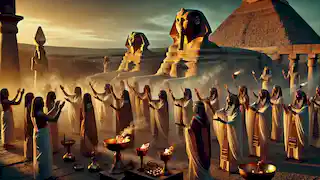
As the centuries passed, the legend of the Sphinx continued to inspire new interpretations. In the Renaissance, artists and scholars revisited the myths of Greece and Egypt, seeking to understand the symbolic meanings behind the Sphinx. The creature was seen as a representation of the duality of human nature—the combination of intellect and strength, wisdom and power. It became a symbol of the eternal struggle between knowledge and ignorance, and the dangers of seeking answers to questions that may be beyond human understanding.
In modern times, the Sphinx remains an enduring symbol of mystery and power. The Great Sphinx of Giza continues to draw visitors from around the world, who come to marvel at its size and contemplate its origins. Archaeologists and historians still debate the purpose of the Sphinx, its connection to the pyramids, and the secrets that may lie hidden beneath its massive paws.
Yet despite all the efforts to uncover the truth, the Sphinx remains an enigma. Its riddles continue to challenge the minds of those who seek to understand the ancient world, and its presence serves as a reminder that some mysteries may never be fully solved. The legend of the Sphinx, therefore, is not just a story of a mythical creature—it is a story of humanity’s quest for knowledge, the struggle to understand the world and our place in it. It is a story of power and wisdom, of the balance between strength and intelligence, and of the eternal mysteries that surround us.
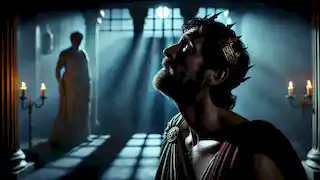
As long as the Sphinx remains, its legend will continue to inspire and challenge those who seek to uncover the secrets of the past. For the Sphinx is more than just a creature of myth and stone—it is a symbol of the questions that define the human experience, questions that have no easy answers but must be
asked nonetheless. Its legacy endures in the stories we tell, the art we create, and the mysteries we seek to unravel. And so, the Sphinx continues to watch over the lands of Greece and Egypt, its presence felt in the shadows of the pyramids and the echoes of ancient myths, a guardian of secrets and a testament to the enduring power of legend.

















